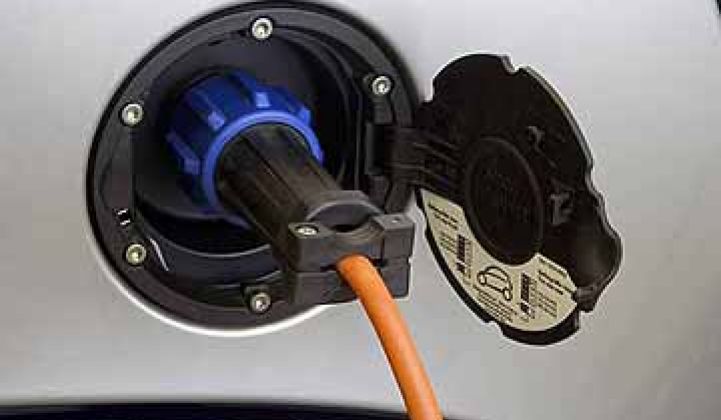Ready or not, electric vehicles are coming -- and soon. Two global giants, SAP and Siemens, are testing the waters with a new partnership in hopes of taking advantage of this new market. The companies announced a collaboration at GridWeek 2010 to establish an eCar proof of concept.
What exactly does that mean? The proof of concept is meant to show that plugging in electric vehicles is not an individual undertaking, but rather an effort that will take collaboration across a range of stakeholders. Siemens Energy will supply the physical charging station that will use software from SAP and others to help utilities manage charging across multiple providers.
“Siemens prides itself on delivering the future of energy today. Siemens and SAP have successfully done this work in Europe and now it is time to introduce it to North America,” Holger Kormann, vice president for Energy, North America at Siemens IT Solutions and Services, said in a statement.
The ultimate purpose of this project is to integrate the entire process of people charging their EVs, no matter where, and ultimately generating an invoice at the “home” utility. The concept sounds great, but the issue of driving beyond the range of a “home” utility may be fairly moot with the current range and charge times for this generation of EVs.
The announcement for this partnership imagines a roaming use case where a student living in one state could settle electricity costs during cross-country commutes during school breaks. That makes a lot of assumptions. The first is that the student even has an account with a utility (last time I checked, university dorms pick up the tab for electricity). The next is that students are purchasing EVs. The last is that they are then driving them cross-country.
The scenario is far-fetched in these impending early days of EVs, but will come into play further down the road as charging times shrink and ranges are extended. SAP and Siemens hope to present the lessons learned from the collaboration to utilities sometime next year.
For now, there are more pressing issues, like permitting to get Level 2 charging stations in homes and office buildings. In California, it was confirmed this summer that charging companies, like AeroVironment, Ecotality, Coulomb Technologies and Better Place will not be regulated like utilities, but the first wave of EVs will still test PUCs and utilities in terms of regulation and execution of delivering the power for the vehicles without exploding transformers.
To help answer, or at least further explore some of these questions, Greentech Media is hosting The Networked EV, a conference that will examine the intersection of the grid and EVs, at PG&E on November 9. The conference will focus not only on the technology of EVs, policy issues and adoption rates, but also on the key questions of what sort of enhanced grid infrastructure will be needed to get to the point where college kids are, in fact, driving across country in their EVs.



